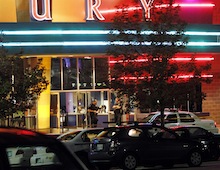In Poynter’s e-book, “Secrets of Prize-Winning Journalism,” we highlight and examine 10 award-winning works from 2013 through interviews with their creators.
These works are inspiring. They’re also instructive. Starting with the “secrets” shared with us by their creators, we’ve extracted some great lessons about how to learn to do better journalism, and paired them with questions to ask in your own newsroom.
In this first installment, we explore lessons learned from The Denver Post’s coverage of the Aurora theater shootings, which earned the newsroom recognition for its work, winning the ASNE distinguished writing award for deadline news reporting, the Pulitzer Prize for Breaking News and The Scripps Howard Award for Breaking News. The Post also received positive feedback from the community, which pleased Post’s News Director Kevin Dale even more.
In “Secrets of Prize-Winning Journalism,” Dale examines the factors that contributed to the Post’s multiplatform coverage of a news story that broke shortly after 1 a.m., when only one person — the night digital producer — was left in the newsroom.
In Dale’s interview with Poynter affiliate faculty member Chip Scanlan, he shared some helpful lessons for covering breaking news:
Aim for accuracy
In breaking news stories, information develops rapidly, and credible sources are even more critical to understanding the true story. The Post didn’t publish a tweet or post until someone in the newsroom confirmed it.
“We knew we would be the source that people in Denver and around the world would turn to for accurate information,” Dale said. The lesson: keep your standards high even in a news frenzy when you see other organizations reporting information that hasn’t been verified.
Ask: what standards do you have for vetting information? How do you ensure the information you distribute is credible?
Use social media to listen and report
The Post dedicated a team to monitoring social media in the wake of the shooting. But it also used social media in three ways: to get information to the public, build stories and find sources. The newsroom posted entries to social media and compiled reporter and photographer tweets of verified facts. Reporters used Twitter and Facebook to find people who were in the theater. That let the Post obtain material, including raw phone video taken by people running from the theater after the shooting.
Ask: how could you more effectively use social media to listen for news and story ideas? How could you find (and vet) sources online (e.g. Facebook’s Open Graph search tool)?
Seek to understand developing narrative, craft strategy to deliver it
The Post’s coverage reflected a remarkable marriage of old and new media.
When the news broke, Dale knew it would be more than 24 hours before anything would be printed in the paper. But he immediately sent reporters and photographers to the scene, organized planning sessions and prioritized story assignments to publish digitally.
Most breaking news situations have several moving parts. Faced with this, the Post decided to prioritize creating a profile of alleged shooter James Holmes. Several reporters collaborated to create a complex and thorough story that took advantage of the strengths of both new and old media. They posted verified facts as online snippets throughout the day, then crafted a long-form narrative for print that put those details into better context.
Ask: what’s the most important content from a breaking news situation? How can you put your best resources to the most effective use? How do you decide on the best publishing vehicle?
Have a process, practice it often before breaking news happens
Faced with the question of whether or not to name the shooter, Dale and his team used previous experiences and discussions to guide their decision-making process. That process, coupled with social media and digital training, has helped the newsroom refine a “full-court strategy” that it put into motion for many major stories throughout the year.
“Plans can be written and put in a drawer and forgotten,” Dale warned. “I’m a fan of practicing solid breaking news, multiplatform journalism every single day. If that is the daily mission, the staff can respond to any story.”
Ask: what processes do you have in place for ethical decision-making on deadline and assembling resources to cover breaking news stories on multiple platforms?
Related: A victim’s mother asks journalists not to name suspect | Denver Post covers yet another shooting, ‘and the whole newsroom gets it’ | The story behind a compelling investigation into how Aurora shooter got his ammo
Resources and Training: Resources for Covering Gun Violence | Telling Smarter Stories about Gun Issues | Ethics and Credibility of Breaking News Online







Comments